If you want to run programs that require GPU acceleration (like AI software) on your computer, you may need to install CUDA.
CUDA is a tool developed by NVIDIA that enables your graphics card to handle more tasks. This guide will walk you through installing CUDA 12.6 and the corresponding cuDNN 9.8 on Windows 10.
Why choose CUDA 12.6 instead of 12.8? Because 12.8 is the latest version and may not be fully compatible with some software yet, leading to potential issues. CUDA 12.6 is a relatively stable and up-to-date version. Of course, if you prefer 12.4 or 12.8, the installation process is similar—just adjust the version number following this tutorial.
Don't worry—even if you're not tech-savvy, you can complete the installation by following these steps! Let's get started!
Step 1: Check If Your Graphics Card Is NVIDIA
Open Device Manager
- Right-click the "Start" button (the Windows icon) in the bottom-left corner of the desktop.
- Select "Windows Administrative Tools" > "Computer Management" from the menu to open the window.
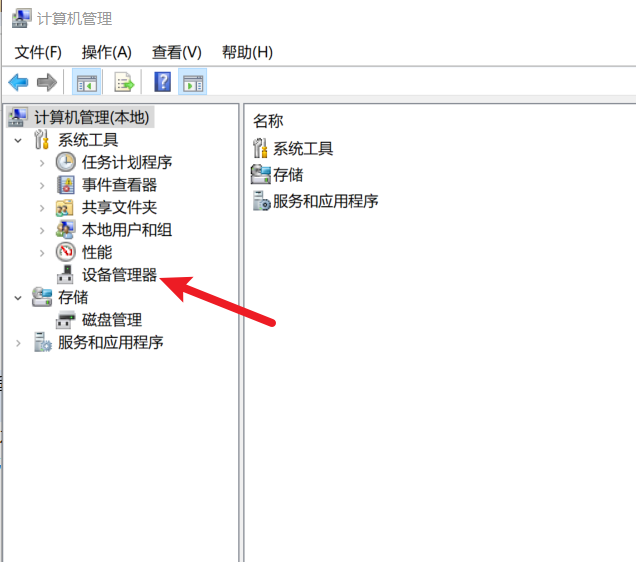
Find Graphics Card Information
In the Computer Management window, click "Device Manager" on the left, then find and expand "Display adapters" on the right by clicking the small arrow.
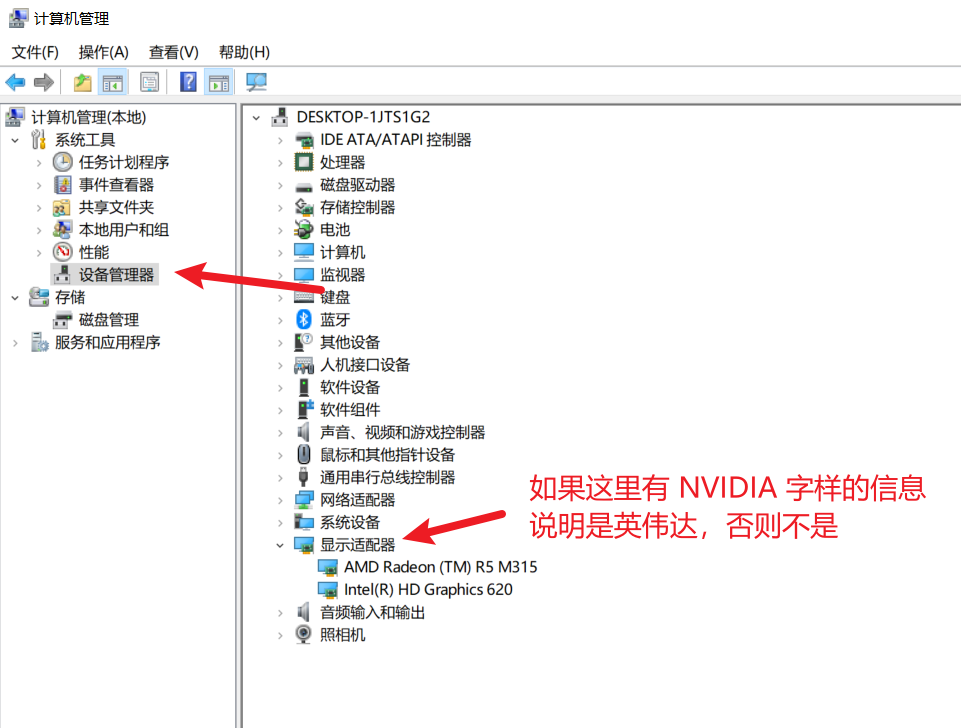
Look for "NVIDIA" in the list, such as "NVIDIA GeForce GTX 1660".
If you see it, congratulations—your graphics card is NVIDIA, and you can proceed. If not (e.g., it shows "Intel" or "AMD"), CUDA won't work, and this tutorial ends here.
Step 2: Check and Update Your Graphics Driver
Open NVIDIA Management Software
If you have the graphics driver installed, there might be a green "NVIDIA" icon in the taskbar (near the clock). Right-click it and select "NVIDIA GeForce Experience" to open.
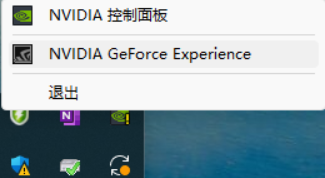
If not, skip to step 3 to download manually.
Check Driver Version and Update
- After opening, click "Drivers" in the top-left corner.
- It will show the current driver version (e.g., "546.33"). If a new version is available, there will be a "Download" button.
- Click "Download" and follow the prompts to install, then restart your computer.
No Software? Download Driver Manually
- Open your browser and go to: https://www.nvidia.com/en-us/geforce/drivers/
- Download the driver update software and install it.
- Open it after installation and follow the instructions to check for driver updates.
Step 3: Check for Existing CUDA and Determine Maximum Supported Version
Open Command Prompt (CMD)
- Press the Windows key + R to open the "Run" window.
- Type
cmdand press Enter to open a black command prompt window.
Check CUDA Version
- In the command prompt, type:
nvcc -V
Press Enter. If it shows something like
Cuda compilation tools, release 12.6, V12.6.xxx, CUDA is already installed with version 12.6. If it says "not recognized as an internal or external command", CUDA is not installed—proceed with the installation.- In the command prompt, type:
Check Maximum Supported CUDA Version
- In the command prompt, type:
nvidia-smi
Press Enter. A table will appear, and in the top-right corner, you'll see "CUDA Version" (e.g., 12.6 or higher). This indicates the highest version your driver supports. As long as it's 12.6 or above, you can install CUDA 12.6.
- In the command prompt, type:
Step 4: Download and Install CUDA 12.6
Download CUDA 12.6
- Open your browser and go to the NVIDIA download page: https://developer.nvidia.com/cuda-downloads?target_os=Windows&target_arch=x86_64&target_version=10&target_type=exe_local
- Select "Windows" > "x86_64" > "10" > "exe (local)", then click "Download".
- The filename will be something like
cuda_12.8.1_572.61_windows.exe, and it will download to your "Downloads" folder.
Install CUDA (Custom Mode)
Double-click the downloaded file, agree to the license agreement, and click Next.
Choose "Custom (Advanced)" installation and click Next.
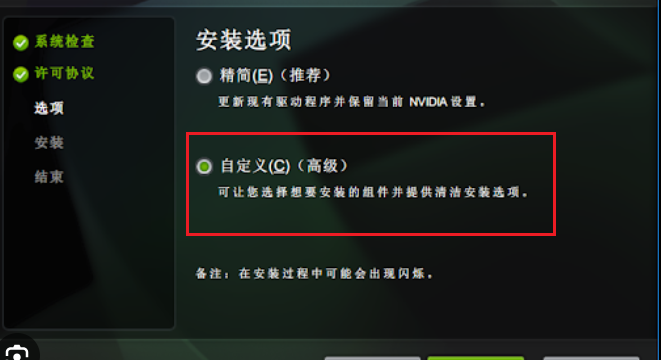
In the options list, only check the first row "CUDA" and uncheck all others to avoid conflicts.
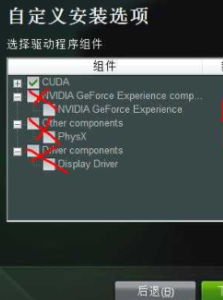
Then click the
+next toCUDAand uncheckVisual Studio Integrationto prevent installation failures.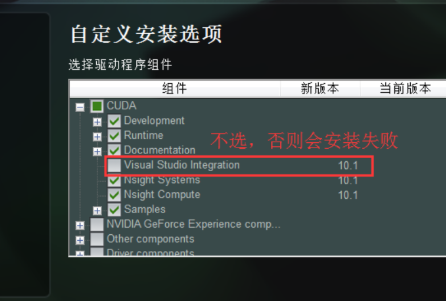
Click "Next" and follow the prompts to complete the installation. The default path is
C:\Program Files\NVIDIA GPU Computing Toolkit\CUDA\v12.6.
What If There's an Error?
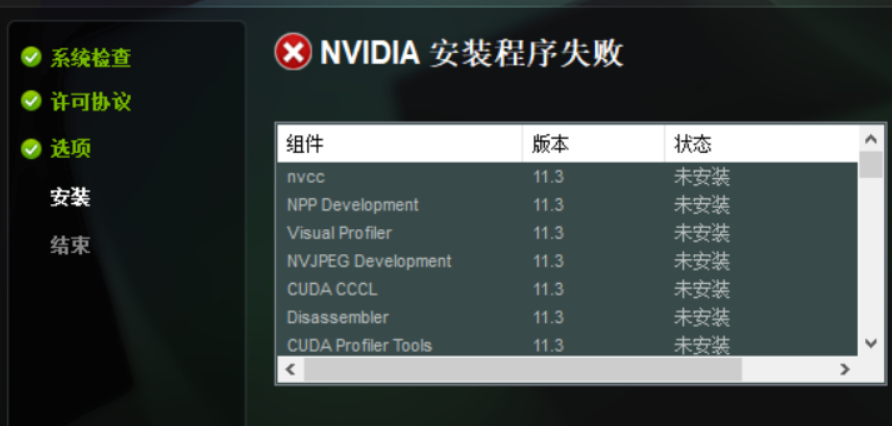
- If the installation stops with "Not installed" or "Failed", the options may not be set correctly. Run the installer again, choose custom installation, ensure only the first row "CUDA" is selected (others unchecked), and under CUDA, uncheck
Visual Studio Integration. - If it still fails, proceed to the next step to install Visual Studio.
- If the installation stops with "Not installed" or "Failed", the options may not be set correctly. Run the installer again, choose custom installation, ensure only the first row "CUDA" is selected (others unchecked), and under CUDA, uncheck
Step 5: Install Visual Studio (If CUDA Installation Fails)
If you unchecked
Visual Studio Integrationin the previous step, it shouldn't fail. If it does, install Visual Studio as described here.
Download Visual Studio Community Edition
- Open your browser and go to: https://visualstudio.microsoft.com/zh-hans/free-developer-offers/
- Click "Free download Visual Studio Community" to download the installer.
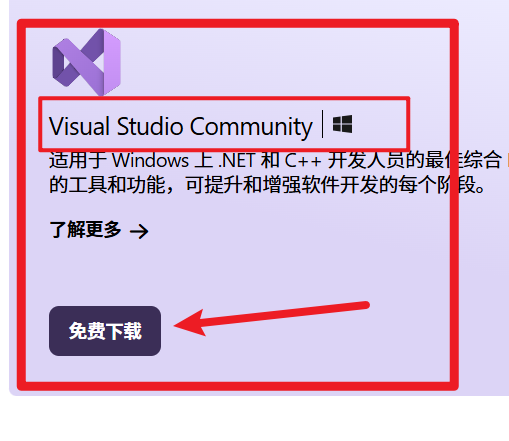
Install C++ Development Environment
- Double-click the installer, and in the pop-up window, select "Desktop development with C++".
- Click "Install". This may take several tens of minutes. Restart your computer after installation.

Reinstall CUDA 12.6
- Go back to Step 4 and run the CUDA installer again. In custom mode, select only "Runtime" for installation. It should succeed this time.
Step 6: Verify CUDA Installation and Configure Environment Variables
Check If Installation Succeeded
- Open CMD (Windows key + R, type
cmd). - Type:
nvcc -V
If it shows
Cuda compilation tools, release 12.6, V12.6.xxx, the installation was successful. If it says "not recognized as an internal or external command", you need to add environment variables.- Open CMD (Windows key + R, type
Add CUDA to Environment Variables
- Right-click "This PC", select "Properties" > "Advanced system settings" > "Environment Variables".
- Under "System variables", find "Path", click "New", and add the following paths:
C:\Program Files\NVIDIA GPU Computing Toolkit\CUDA\v12.6\bin C:\Program Files\NVIDIA GPU Computing Toolkit\CUDA\v12.6\lib C:\Program Files\NVIDIA GPU Computing Toolkit\CUDA\v12.6\include C:\Program Files\NVIDIA GPU Computing Toolkit\CUDA\v12.6\libnvvp - Click "OK" to save, then close all windows.
- Reopen CMD and type
nvcc -V. You should now see the version information.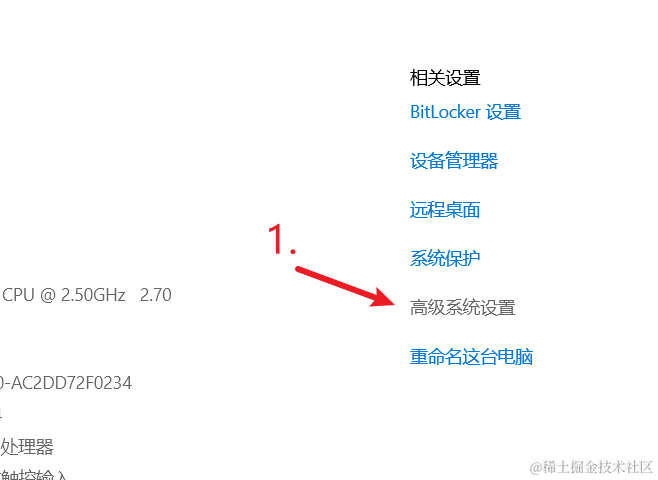
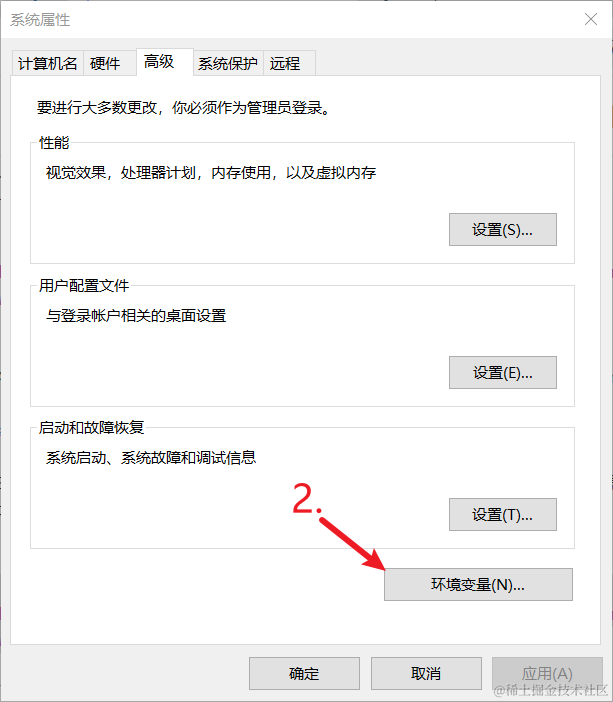
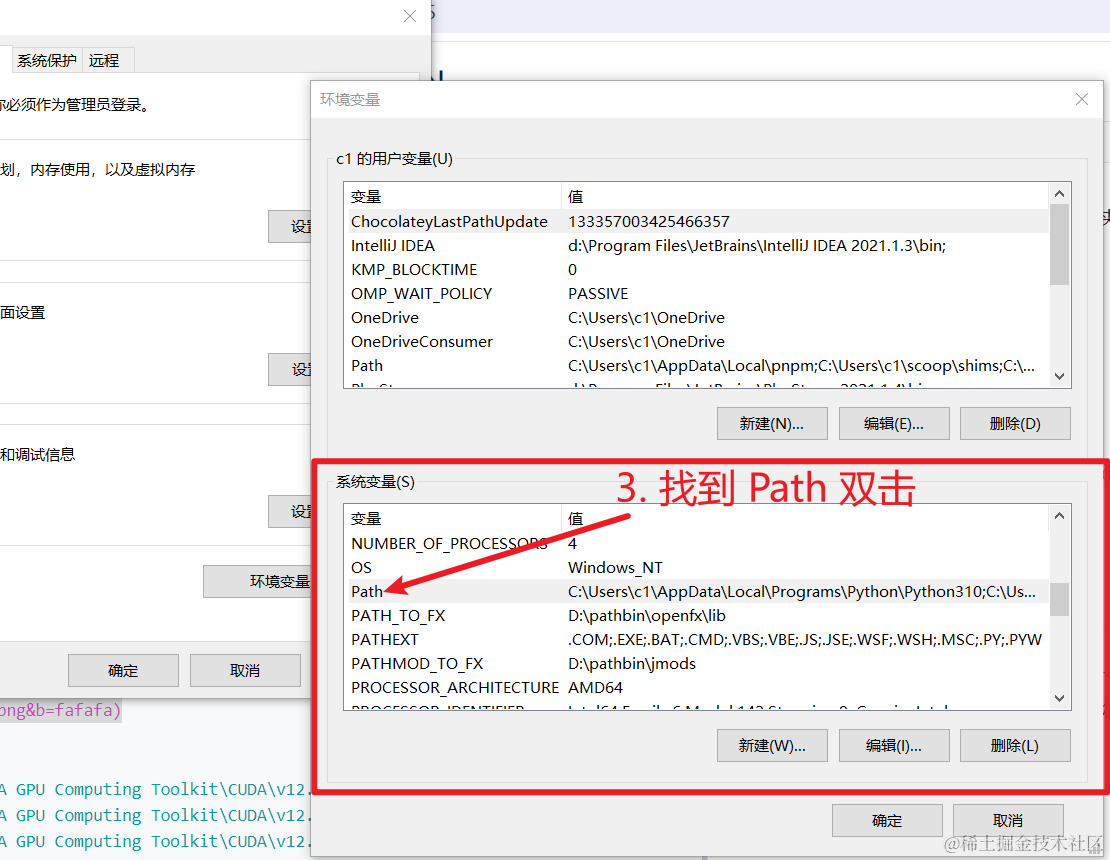
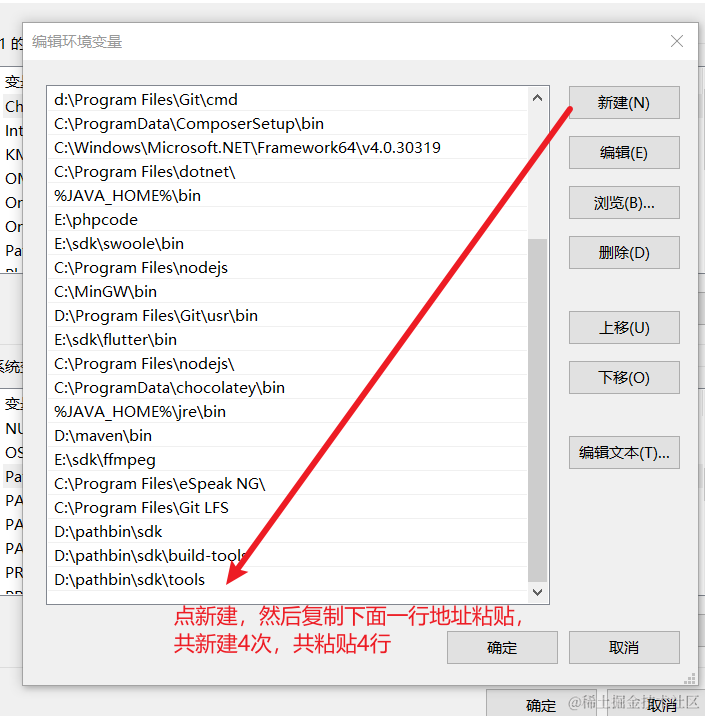
Step 7: Install cuDNN 9.8
Download cuDNN 9.8
- Open your browser and go to: https://developer.nvidia.com/cudnn-downloads?target_os=Windows&target_arch=x86_64&target_version=10&target_type=exe_local
- You may need to log in to your NVIDIA account (register for free if you don't have one).
- Select the "local version" and download the Windows
.exefile.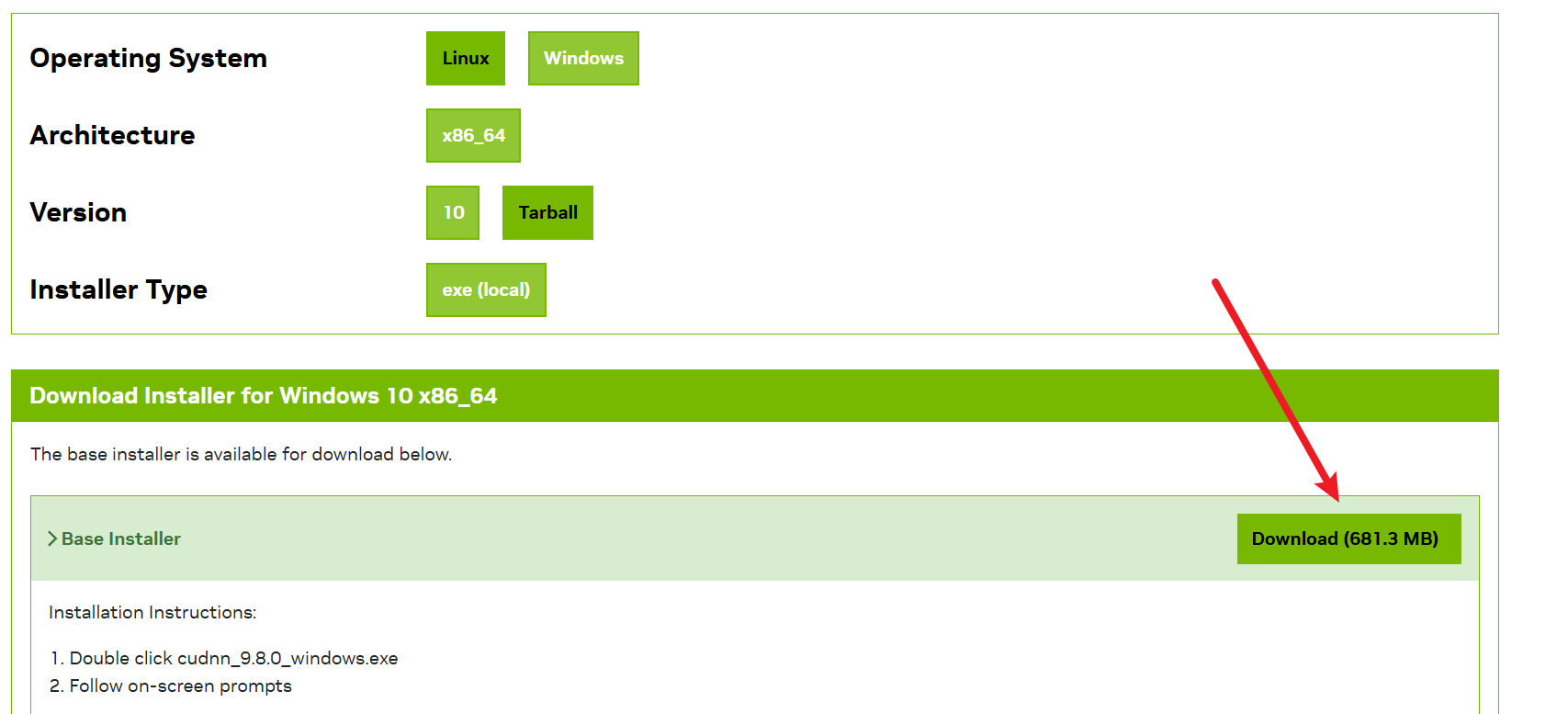
Install cuDNN
- Double-click the downloaded
.exefile and follow the prompts to install.
- Double-click the downloaded
If cuDNN doesn't work in your programs after installation, open the installation directory (default:
C:\Program Files\NVIDIA\CUDNN\v9.8), copy thelib,bin, andincludefolders, and paste them intoC:\Program Files\NVIDIA GPU Computing Toolkit\CUDA\v12.6, overwriting existing files if prompted.
Final Step: All Done!
Now CUDA 12.6 and cuDNN 9.8 are installed! You can start running programs that require GPU support. If there are software instructions (e.g., running python script.py), open CMD, navigate to your project folder, and try the corresponding commands.
